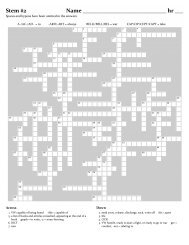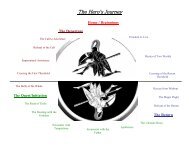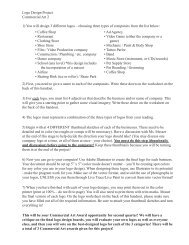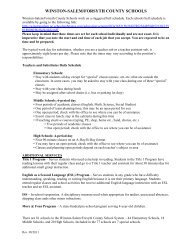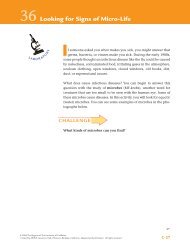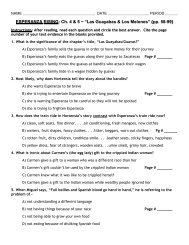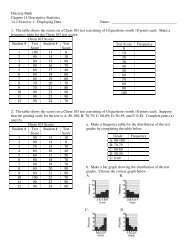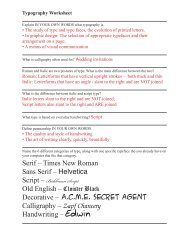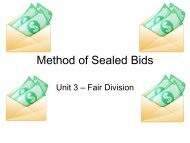Act 65
Act 65
Act 65
You also want an ePaper? Increase the reach of your titles
YUMPU automatically turns print PDFs into web optimized ePapers that Google loves.
Breeding Critters—More Traits • <strong>Act</strong>ivity <strong>65</strong><br />
ANALYSIS<br />
1. Look at the other critters made by your classmates. They are all<br />
siblings (brothers and sisters). What are their similarities and differences<br />
2. Which characteristics show a simple dominant/recessive pattern<br />
like tail color List them in a table and indicate which version is<br />
dominant and which is recessive for each trait.<br />
Hint: Look at Table 1 to see which traits have this pattern.<br />
Some traits do not show a simple dominant vs. recessive pattern. Look at<br />
Table 1 to help you answer Questions 3–5.<br />
3. For which characteristic do some offspring have traits in between<br />
Skye’s and Poppy’s traits Explain. (For example, in some plants,<br />
a cross between a red- and white-flowered plant will give pinkflowered<br />
offspring. This is called incomplete dominance.)<br />
4. For which characteristic do some offspring have both Skye’s and<br />
Poppy’s traits Explain. (For example, in humans, a person with<br />
type A blood and a person with type B blood can have a child with<br />
type AB blood. This is called co-dominance, as both traits appear<br />
in the offspring.)<br />
5. Which critter trait is affected by an environmental factor, such as<br />
light, temperature, or diet Explain.<br />
6. Consider the pattern for sex determination.<br />
a. How is a critter’s sex determined<br />
b. Whose genetic contribution—Ocean’s or Lucy’s—determines<br />
the sex of the offspring<br />
7. Who does your critter most look like—Skye, Poppy, Ocean, or Lucy<br />
On which traits did you base your choice<br />
8. Draw a critter with all recessive traits. Assume the recessive trait for<br />
spikes is no spikes.<br />
EXTENSION<br />
Use a software program called GenScope to investigate genetics. Go to<br />
the SALI page of the SEPUP website for instructions.<br />
© 2006 The Regents of The University of California.<br />
Created by SEPUP, Lawrence Hall of Science, Berkeley, California. Adapted with permission. All rights reserved.<br />
D-63



